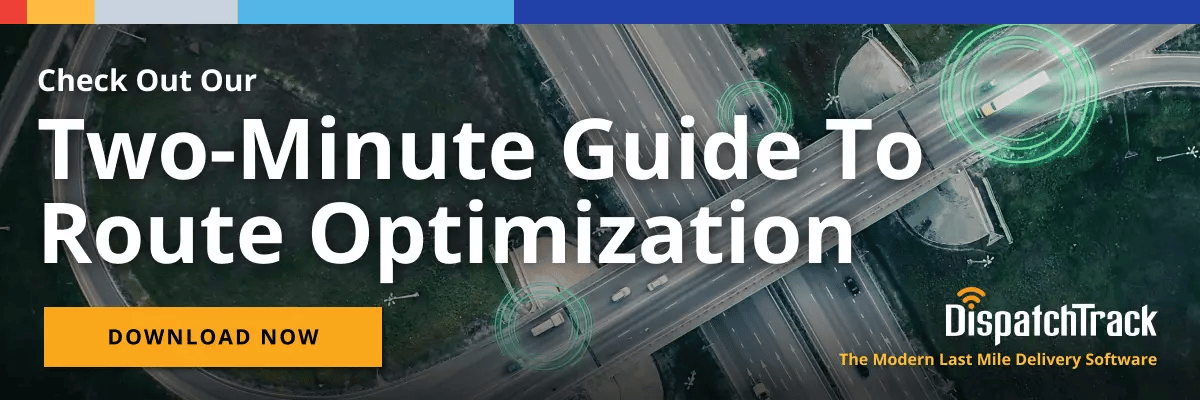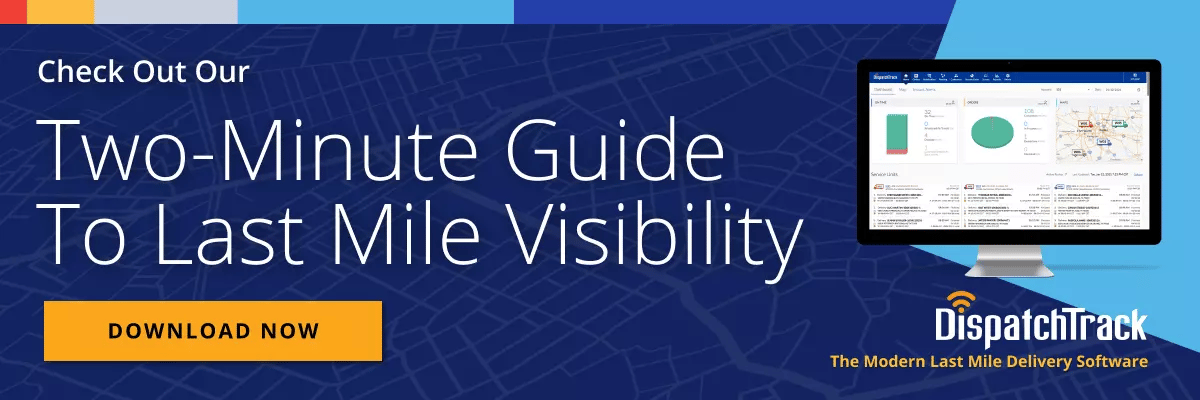Implementing the right dispatch tools has never been more urgent, as dispatch operations supporting smart last mile deliveries are more demanding than ever. E-commerce sales are increasing for product categories like home furnishings and home improvement that often require scheduled deliveries. At the same time, same-day delivery is becoming more popular across all verticals, with more than half of brands and shippers already offering same-day deliveries.

To respond to these new challenges in delivery volume and service expectations as well as to keep customers satisfied, companies may need to scale up their last mile logistics efforts. However, to effectively fulfill orders at scale, taking into account surges in demand and increasing delivery costs, businesses need to optimize their fleets' dispatching, scheduling, and routing.
By using the right dispatch tools, you will be able to improve resource management, fuel usage, on-time performance, and ultimately customer satisfaction. Here are the main features to look for in dispatching software.
The Basics of Dispatching Tools
In today's business world, customer service is everything. Customers expect delivery to be efficient, transparent, and speedy. For customers to receive better service, delivery dispatch software is becoming increasingly important—especially as mobile devices become more ubiquitous and more popular for ordering and tracking.
Businesses and logistics providers must then take advantage of today's technology to improve service management and ensure their dispatching processes support a positive customer experience. That means finding SaaS-based route dispatch software that can automate and optimize key delivery management processes while boosting transparency across systems.
Although customer satisfaction is important, it's not the only factor. The cost of two-day shipping is nearly double that of five-day shipping, but the former has become commonplace in today's market. Streamlining dispatch operations can deliver time and cost savings, which means it’s a must for competing in this new environment.
What Features Should Dispatch Tools Offer?
Many of the technologies used today for scheduled delivery are obsolete and inefficient. When software cannot be accessed on mobile devices, for instance, it cannot meet the needs of modern mobile workers. Efficient route planning, scheduling, and dispatch planning without updated technology are challenging, if not impossible to achieve.
Conversely, smart dispatching tools provide companies with the flexibility they need to deliver the level of customer service their brands and customers expect while at the same time remaining cost-effective.
Below are key features you must look for in advanced dispatching tools:
AI-powered routing and scheduling
Fulfilling more orders is as simple as delivering more in each run. Smart delivery dispatch solutions therefore should offer route optimization capabilities that automatically find the most efficient routes and sequences of stops for each day’s orders.
During route planning and optimization, multiple factors must be considered to find the optimal routes. These factors can include distance, driver speed and skill, capacity limitations, customer requests, traffic patterns, and more. In other words, getting your routes right takes a lot more calculation than a human planner can do by hand. And things get even trickier when you try to calculate ETAs for each stop.
Of course, accurate ETAs are a huge factor in customer success. That’s why the best delivery management software utilized AI and machine learning to accurately estimate arrival times based on real-time data streams and learned service time estimates. If you can find software that offers this functionality, you can avoid situations where the customer’s not at home because the delivery truck doesn’t arrive when expected. 
Truck dispatching optimization
It should be possible to optimize trucking dispatch and truck loading even on an individual vehicle level with the best dispatch software. It is possible to utilize the most effective vehicle for every delivery or service by utilizing these functionalities.
Though there’s a lot of fundamental complexity to effective dispatching, the right software tools will account for these complexities (e.g. what’s the right type of service unit for the job or the required driver/technician skill level) at the routing stage. But your system should be smart enough to make decisions for you, according to your specific considerations that can include driver costs, vehicle weight, and volume capacity, time-to-delivery, estimated time on site, and advanced delivery requirements like contactless deliveries and regulatory restrictions.
From there, you can effectively combine routing and dispatching into one continuous step—decreasing the need for manual effort and creating closer integration between processes.
Easy integration
It goes without saying that dispatch software does not exist in a vacuum, and yours should be no different. Dispatching solutions are embedded in an ecosystem of numerous other touchpoints, which is why it's essential to determine how the dispatch tool integrates with TMS, OMS and other enterprise systems.
No matter how your business goals change, your dispatch solution must meet them. This means that your system should be sufficiently agile and configurable to make it easy to integrate with new technology and processes. The last thing you want is to adopt a solution only to find a year down the line that changing business realities have made it obsolete or unworkable.
Communication, coordination, and visibility
An intelligent fleet dispatch software makes sure that every team is in sync as part of a smart, integrated, ecosystem. The teams in the delivery flow need to be informed when and where they need to be to ensure timely deliveries, and the back-office teams need to know what’s happening at each touchpoint. That means that drivers need to be instructed which hubs to pick orders from, the location of loading, and the day and time the package is needed. More than that, planners need to be able to pull information from different systems into one place to make smarter, more effective plans.
Of course, it is also important for customers to know where their drivers and technicians are during the delivery. That means that your visibility and communication capabilities need to go beyond your four walls and extend to your customers. This should include emails, texts, and calls at various stages of the delivery process. It should include two-way communication. And it should include real-time order tracking on the day of delivery from the comfort of the customer’s own device.
You should also ensure that all of this is fully automated and coordinated so that expenses are minimized and delivery windows are met consistently.
Today's delivery market demands the use of top delivery service dispatch tools. In response to rising consumer demands for easy and fast delivery, businesses must adopt new technologies to remain competitive. Real-time dispatch software is a small but necessary piece of the puzzle needed to automate and optimize the end-to-end delivery process.
